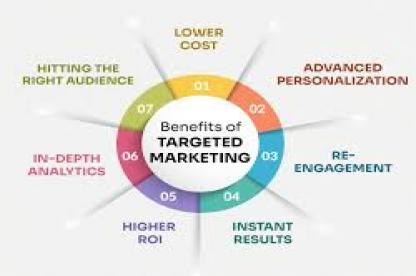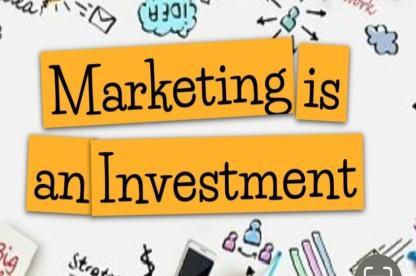
- 30 August 25
Advertising Solutions: Effective Strategies to Maximize Brand Visibility and Profit
Advertising Solutions: Effective Strategies to Maximize Brand Visibility and Profit
The advertising industry has transformed dramatically in recent years, shaped by the digital economy, programmatic platforms, and shifting consumer behaviors. Businesses of every size—from startups to top brands—face a single challenge: how to maximize visibility and profitability while keeping advertising costs under control. In this article, we will explore the most effective advertising solutions, how targeted strategies can help businesses reach their audience, and why digital marketing trends play a central role in business growth.

Why Advertising Solutions Matter for Businesses
Advertising is no longer about simply running a banner or placing an ad in the newspaper. The modern advertising ecosystem is integrated, data-driven, and designed for precision targeting. Brands invest in advertising solutions to:
-
Expand global reach
-
Improve customer engagement
-
Generate measurable profit
-
Enhance brand visibility
-
Maximize return on ad spend
Without clear advertising strategies, even the most innovative business ideas can struggle to reach the right audience.
Understanding Digital Advertising
Digital advertising is the backbone of modern marketing. Unlike traditional campaigns, digital ads allow companies to track engagement, analyze performance, and optimize campaigns in real-time. This ensures that businesses can adjust budgets, test ad formats, and discover what works best for their brand.
Key types of digital advertising include:
-
Banner ads – Still effective for building awareness when placed strategically on high-traffic platforms.
-
Mobile ads – Growing rapidly as more consumers rely on smartphones for shopping and browsing.
-
Social media ads – Powerful for building communities, generating engagement, and encouraging conversions.
-
Programmatic advertising – Uses AI and automation to purchase ad placements in real-time, ensuring efficiency.
Targeted Advertising: Reaching the Right Audience
Targeted advertising is one of the most powerful tools available today. By analyzing data such as demographics, interests, and online behavior, businesses can deliver highly relevant messages to specific groups of people.
Benefits of targeted advertising include:
-
Higher conversion rates
-
Reduced wasted budget
-
Better customer satisfaction
-
Stronger brand loyalty
For example, a fashion brand can target young adults on Instagram who have shown interest in similar products, while a B2B company might focus on LinkedIn ads aimed at decision-makers.

Maximizing Your Budget with Effective Ad Placement
Every business has limits to what it can spend. That is why maximizing ad budget through smart placement is essential. The key is not always spending more but spending wisely.
-
Use analytics tools: Platforms like Google Ads, Facebook Ads Manager, and SEO analytics help track performance.
-
Test multiple formats: A/B testing banners, videos, and carousel ads shows which creative delivers the best results.
-
Prioritize ROI-driven channels: Not every platform is worth the investment—choose those that align with your goals.
Businesses that invest time in analytics and placement strategies see higher returns and lower costs.
SEO and Ad Analytics: How They Work Together
SEO (Search Engine Optimization) and advertising are often seen as separate, but when combined, they amplify results. SEO builds organic visibility while advertising accelerates reach. When paired with ad analytics, businesses gain valuable insights:
-
Which keywords drive the most conversions
-
How users interact with ad creatives
-
Which platforms deliver the highest ROI
-
What messaging resonates with the audience
For example, using SEO-driven content alongside targeted ads ensures that businesses not only rank on search engines but also engage audiences with precision.
Brand Visibility in the Digital Era
Visibility is everything in competitive markets. With countless brands fighting for attention, businesses must adopt multi-channel strategies to stand out.
Key techniques for improving brand visibility include:
-
Running integrated campaigns across social, mobile, and display networks
-
Leveraging influencer partnerships to reach niche audiences
-
Using retargeting ads to stay in front of potential customers
-
Building consistent branding across all platforms
The stronger the visibility, the more trust and recognition a brand builds in the minds of consumers.
Digital Marketing Trends Shaping Advertising
To remain competitive, businesses must adapt to emerging trends in digital marketing. Some of the most important include:
-
AI-driven personalization: Ads that adjust in real time to user behavior.
-
Voice search optimization: With devices like Alexa and Google Assistant, voice search-ready content is essential.
-
Interactive ads: Polls, quizzes, and gamified experiences increase engagement.
-
Video dominance: Short-form videos continue to outperform static ads.
-
Sustainability messaging: Brands highlighting eco-friendly initiatives attract socially conscious consumers.
Businesses that adapt to these trends are better positioned to capture customer attention and remain relevant.
Partnering with Advertising Platforms
Partnerships play a significant role in modern advertising. Collaborating with advertising platforms and affiliates helps brands expand their reach quickly. Affiliate programs, for instance, allow businesses to reward partners for generating leads or sales.
Benefits of partnerships include:
-
Access to larger audiences
-
Increased credibility through association with top brands
-
Cost-effective performance-based results
-
Opportunities for long-term collaboration
Worldwide Reach: Expanding Beyond Borders
One of the greatest advantages of digital advertising is global reach. A small business can advertise products internationally without massive costs. Social media platforms and programmatic ad systems make it possible to display ads across multiple countries instantly.
However, international campaigns require attention to cultural differences, language, and consumer behavior. Ad copy that works in one country may not resonate in another. Businesses should always adapt messages for each target market.
Creating Profitable Advertising Campaigns
The ultimate goal of advertising is profitability. While visibility and reach are important, revenue is the true measure of success.
Tips for building profitable campaigns:
-
Define clear goals before launching.
-
Segment audiences for better targeting.
-
Use compelling ad creatives that align with customer needs.
-
Measure performance consistently and refine strategies.
-
Allocate budget strategically across platforms.
By treating advertising as both an art and a science, businesses can maximize both reach and profit.
Conclusion: Building the Future of Advertising
Advertising solutions today are about more than just visibility—they are about creating measurable results, building long-term customer relationships, and maximizing profitability. By combining targeted advertising, smart ad placement, analytics, SEO, and partnerships, businesses can craft strategies that adapt to digital marketing trends while staying focused on growth.
Brands that embrace innovation, leverage data, and optimize campaigns will not only survive in the competitive digital landscape—they will thrive.




